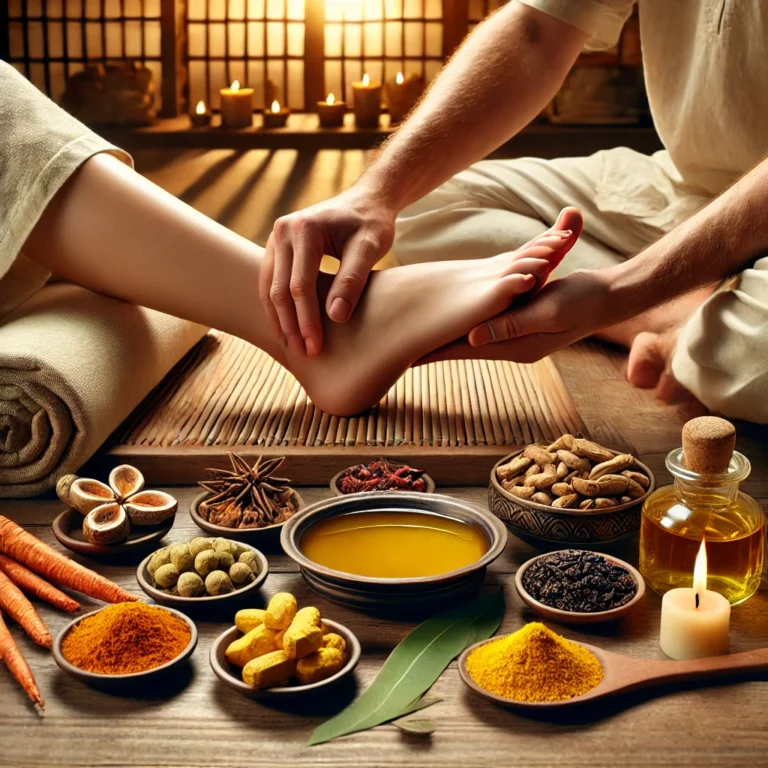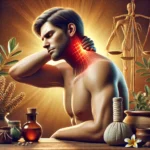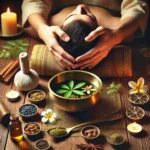Ayurvedic Treatment for Heel Pain
Heel Pain is a typical disease that influences individuals, everything being equal, frequently prompting inconvenience and confined portability. In Ayurveda, heel pain is principally connected with Vata unevenness, which prompts irritation and firmness in the impacted region. Instead of depending on transitory relief from discomfort through present day medication, Ayurvedic treatment centers around addressing the underlying driver by reestablishing harmony to the body’s energies, diminishing aggravation, and advancing by and large prosperity.There are many home remedies available to mitigate the pain. We will be discussing how ayurvedic treatment for heel pain helps faster.
Reasons for Heel Pain in Ayurveda
As per Ayurveda, heel Pain is generally brought about by an exasperated Vata dosha, which prompts dryness, firmness, and irritation in the muscles and tendons. A portion of the key causes include:
- Plantar Fasciitis – Aggravation of the plantar belt tendon
- Heel Spikes – Unusual bone development because of calcium stores
- Achilles Tendinitis – Abuse or type of the Achilles ligament
- Obesity or Over the top Weight – Expanded tension on the heels
- Poor Footwear – Absence of curve support prompting weight on the impact points
- Excessive Standing or Walking – Delayed weight on the heel region
- Joint Pain – Degenerative joint condition influencing the heel bones
Ayurvedic Solutions for Heel Pain
1. Home grown Solutions for Regular Help with discomfort
Ayurveda offers a few powerful spices that assist with lessening irritation, further develop course, and give dependable help from heel torment.
- Ashwagandha (Withania somnifera): Known for its mitigating properties, it decreases torment and reinforce muscles.
- Guggulu (Commiphora wightii): A superb solution for joint and bone-related torment.
- Turmeric (Curcuma longa): Contains curcumin, which is a characteristic mitigating specialist that lessens enlarging and solidness.
- Triphala: A mix of three strong spices that detoxifies the body and upgrades tissue fix.
- Aloe Vera: Calming and cooling properties that assistance in decreasing irritation in the heels.
2. Ayurvedic Oils for Back rub (Abhyanga)
Ordinary oil rub with sedated Ayurvedic oils assists in lessening with tormenting, further developing dissemination, and loosening up the foot muscles.
- Mahanarayan Oil: A profoundly successful oil for joint and muscle help with discomfort.
- Dhanwantharam Oil: Diminishes aggravation and solidness in the heels.
- Sesame Oil: A warm oil that profoundly feeds the muscles and eases torment brought about by Vata unevenness.
- Castor Oil: Has regular pain relieving properties that decrease agony and expanding in the heel region.
3. Hot and Cold Treatment
Shifting back and forth among hot and cold packs is a successful method for lessening enlarging and torment.
- Hot Treatment: Further develops blood dissemination and loosens up close muscles.
- Cold Treatment: Decreases irritation and numbs sharp torment.
4. Ayurvedic Diet for Heel Help with discomfort
Ayurveda underlines the significance of a decent eating routine in overseeing heel torment. The right sustenance helps in lessening irritation and reinforcing bones.
Food varieties to Include:
- Warm, prepared feasts wealthy in solid fats
- Mitigating flavors like turmeric, ginger, and cinnamon
- Calcium-rich food varieties like sesame seeds, dairy, and salad greens
- Hydrating food varieties, for example, coconut water and home grown teas
Food sources to Stay away from:
- Handled and low quality foods
- Cold and crude food varieties that bother Vata
- Exorbitant caffeine and circulated air through drinks
- Sweet food varieties that advance aggravation
5. Ayurvedic Way of life Practices for Heel Pain
Following a trained way of life forestalls heel torment and guarantees long haul help.
Yoga and Extending:
- Tadasana (Mountain Posture): Further develops pose and alleviate weight on the heels.
- Vrikshasana (Tree Posture): Fortifies the lower legs and foot muscles.
- Padahastasana (Hand-to-Foot Posture): Stretches the plantar sash and Achilles ligament.
- Viparita Karani (Advantages the Wall Posture): Further develops blood flow and diminishes enlarging.
- Hydration: Drink a lot of warm water over the course of the day to forestall firmness in joints and muscles.
- Legitimate Footwear: Wear agreeable shoes with great curve backing to forestall unnecessary burden on the impact points.
- Everyday Foot Back rub: A 5 brief foot rub before sleep time helps keep the feet loose and torment free.
6. Ayurvedic Detoxification (Panchakarma) for Heel Pain
For ongoing heel torment that doesn’t answer normal medicines, Panchakarma treatment is profoundly useful. It detoxifies the body, eliminates well established poisons, and revives tissues.
- Abhyanga (Oil Back rub): Greases up the joints and straightforwardness firmness.
- Swedana (Steam Treatment): Advances course and diminishes muscle strain.
- Virechana (Purgation Treatment): Purifies the stomach related framework and eliminate poisons that add to aggravation.
- Basti (Cured Douche): Balances Vata and reinforces bones and joints.
Conclusion
Ayurvedic treatment for heel torment centers around regular recuperating, focusing on the main driver of the aggravation instead of simply giving transitory alleviation. By integrating home grown cures, oil kneads, yoga, a legitimate eating regimen, and way of life changes, one can successfully oversee and forestall heel torment. On the off chance that the condition perseveres, counseling an Ayurvedic expert for customized treatment is strongly suggested.
Ayurvedic Treatment for Neck Pain
Back Pain Treatment in Ayurveda


